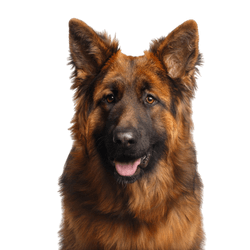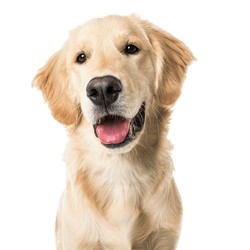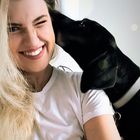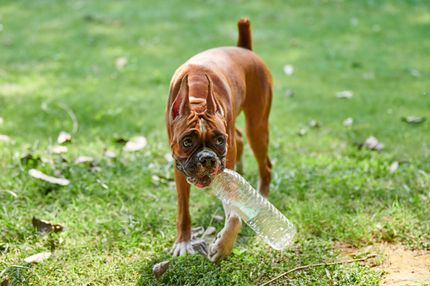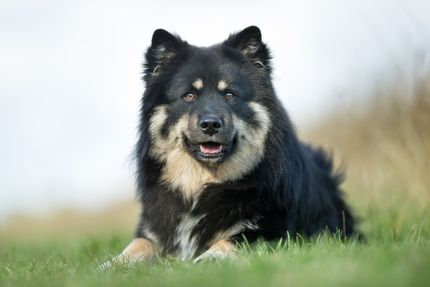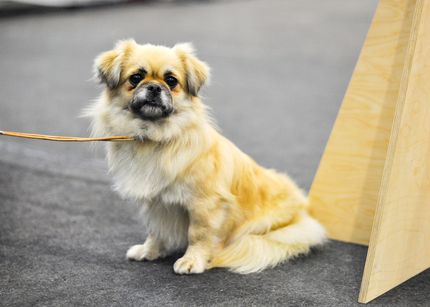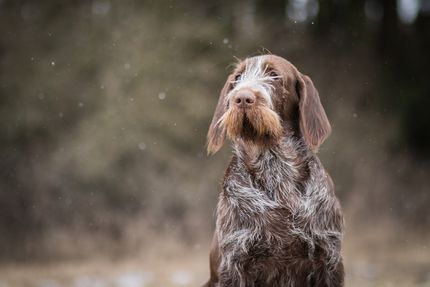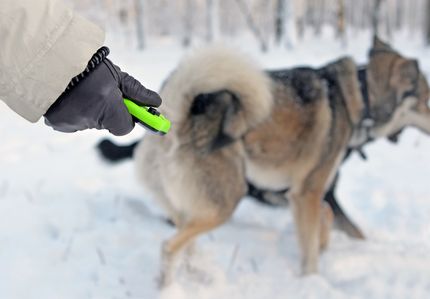Facts & Origin
Golden Retriever and German Shepherd mix - the Golden Shepherd
The Golden Shepherd is a cross between the Golden Retriever and the German Shepherd. The aim of this mix is to combine the friendliness and willingness to learn of the Golden Retriever with the intelligence and willingness to work of the German Shepherd. The result is an extremely versatile dog that is suitable for many tasks - from family life to service or therapy dog. Nevertheless, there are also critical voices regarding this designer mix, particularly with regard to breeding and long-term health.
Criticism of the Golden Shepherd
The main criticism concerns the lack of transparency of many breeding lines. As the Golden Shepherd is not a recognized breed with defined standards, temperament, health and appearance vary greatly - depending on which parent animals are used. Many of these dogs come from breeding lines where no attention is paid to temperament or genetic health. This can result in nervous, insecure or overly impulsive animals that are difficult for beginners to handle.
In addition, the hereditary problems of both breeds can combine and even intensify. Both Golden Retrievers and German Shepherds are prone to hip dysplasia, elbow dysplasia, cancers and certain eye problems. If no health examinations are carried out on the parent animals, the risk of such diseases in the offspring increases considerably.
Another point of criticism concerns the often naive desire to simply get "the best of both worlds" - without considering that the problematic characteristics of both breeds can also occur in a mix, e.g. an exaggerated protective instinct or strong sensitivity.
What are they suitable for?
Despite these concerns, the Golden Shepherd is popular with many owners - and not without reason. If bred and kept well, these dogs are friendly, willing to learn, eager to work and loyal. They often show a close bond with their humans, have good social behavior and are suitable for families with appropriate training.
Due to their high intelligence and willingness to cooperate, they are well suited for dog sports such as agility, obedience or mantrailing. They can also be used as therapy dogs, assistance dogs or in areas such as search and rescue - provided they have the necessary strength of nerve and training.
However, it is important that they are kept physically and mentally busy. Underchallenge can lead to restlessness, frustration or even aggression. The Golden Shepherd is therefore not usually a good choice for couch potatoes or people without dog experience.
The Golden Shepherd in a nutshell
The Golden Shepherd is an intelligent and capable mixed breed with great potential - but also with requirements. Anyone interested in such a dog should take a close look at its origins, needs and possible challenges. With responsibility, training and support, it can become a loyal and versatile partner in everyday life.
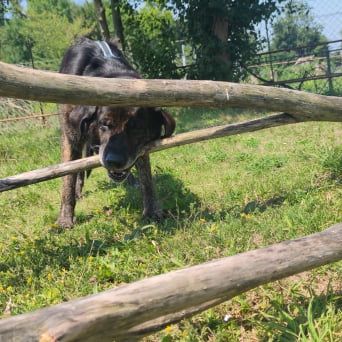

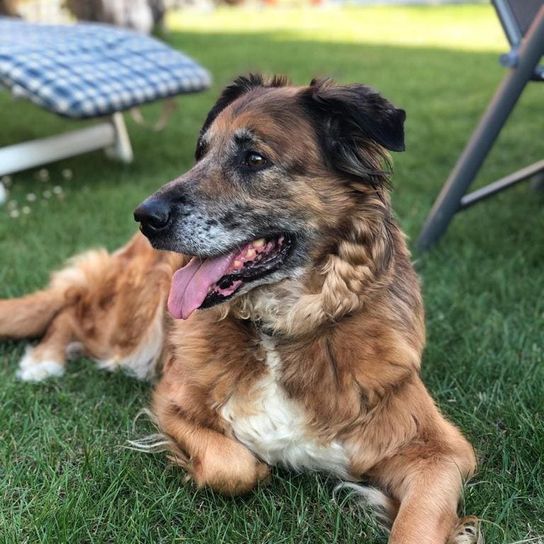
| Alternate Name | - |
| Origin | Germany - UK |
| Life expectancy | 9 - 13 years |
| Care requirements | low-maintenance - high-maintenance |
| Activity level | high - average |
| FCI group | not recognised |
| AKC group | not recognised |
| KC group | not recognised |
More German Shepherd mixes
More Golden Retriever mixes
Attitude, character and temperament of the breed
Possible character traits
Golden Shepherds are considered to be very intelligent, which makes them quick learners. They are often eager to work and have a pronounced willingness to cooperate, which makes them particularly well qualified for training and various tasks. At the same time, many show great social skills - they get along well with people, children and - with good socialization - also with other dogs.
Their loyalty is strong: they bond closely with their caregivers and always want to be near them. However, this close bond can also mean that some Golden Shepherds are prone to separation stress if they have to be left alone for too long.
Many representatives of this mix also have a natural protective instinct without being aggressive. They show a healthy vigilance, can distinguish between "normal" and threatening situations and rarely tend to bark excessively - provided they have been well socialized.
In everyday life
In everyday life, the Golden Shepherd is an active, often very adaptable dog. They love doing things together, be it going for a walk, hiking, jogging or even challenging brain games. If he is physically and mentally exercised, he is usually calm and relaxed in the house.
It is usually an ideal companion for families with older children, sporty people or active couples. A Golden Shepherd can also be a good choice for people with an interest in dog sports or therapeutic work with dogs - provided the necessary training is provided.
It is less suitable for people with little time, little dog experience or a very quiet everyday life, as it can quickly become frustrated or unbalanced if underchallenged. He then tends to exhibit behavioral problems such as excessive alertness, nervousness or destructiveness.
Character
Possible health problems
As with many designer dogs, various health problems can also occur in the Golden Shepherd - especially if no preventative health measures were taken during breeding. As both parents - the Golden Retriever and the German Shepherd - have genetic diseases, these can also manifest themselves in mixed-breed offspring.
Hip and elbow dysplasia: Both breeds are prone to joint deformities, which in the Golden Shepherd means an increased risk of hip dysplasia (HD) and elbow dysplasia (ED). These diseases lead to restricted movement, pain and can cause osteoarthritis in the long term.
Degenerative myelopathy: This neurodegenerative disease is more common in German Shepherds and can also be passed on to Golden Shepherds. It leads to gradual paralysis of the hindquarters, cannot be cured and places a heavy burden on everyday life.
Heart disease: The Golden Retriever is particularly prone to certain heart problems, such as subaortic stenosis, which can lead to poor performance or even sudden heart failure.
Cancers: Golden retrievers are unfortunately known to have an increased risk of tumors, such as lymphoma or mast cell tumors. This risk can also exist in the Golden Shepherd, especially if this disposition is present in the breeding line.
Eye diseases: Both breeds can be prone to hereditary eye diseases, such as cataracts (cataracts), progressive retinal atrophy (PRA) or entropion. Regular eye examinations are therefore important for breeding animals.
Allergies and skin problems: Golden Shepherds can react sensitively to certain foods, environmental factors or parasites, which can manifest itself in itching, eczema or ear infections.
Stomach problems: Like many large dog breeds, there is some risk of gastric torsion, which is a veterinary emergency. This risk can increase, especially after eating or during vigorous exercise.
The Golden Shepherd can be a healthy, robust dog - if bred responsibly. Good breeders pay attention to the health care of the parent animals, e.g. through X-ray examinations, genetic tests and regular veterinary checks. Anyone interested in a Golden Shepherd should make sure that the breeder is open about the health history of their dogs and can provide the relevant evidence. After all, prevention is the best protection against later suffering - especially with such popular mixed breeds.

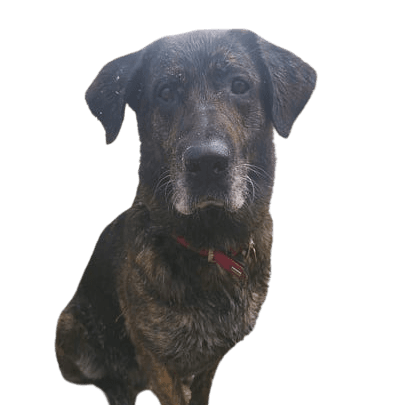
Possible appearance of the Golden Shepherd
As the Golden Shepherd is a mixed breed, there is no uniform breed standard - this means that the appearance can vary greatly depending on which characteristics of the Golden Retriever or German Shepherd prevail. Nevertheless, there are some typical characteristics that appear in many Golden Shepherds.
Size and build
Golden Shepherds are usually medium to large in size, with a shoulder height of around 55 to 67 cm and a weight of between 25 and 40 kg. Their build is usually strong and athletic, with good muscling and elegant but powerful movements. They appear athletic, but not overly bulky.
The back is often straight and stable, sometimes slightly sloping as in the German Shepherd Dog. The chest is deep, the legs long and well proportioned.
Head and face
The head is usually expressive, with a medium-length muzzle. Some Golden Shepherds have a broader skull, reminiscent of the Retriever, while others have a slightly more prominent profile like the German Shepherd. The ears can be erect, semi-erect or drooping - this also varies from dog to dog.
The eyes are usually almond-shaped and colored in warm shades of brown. They appear alert and friendly, often with an intelligent, slightly watchful gaze.
Coat
The coat is one of the most striking features: It is usually of medium to long length, dense and often with an undercoat. Depending on the genetic make-up, the coat can be smooth, slightly wavy or somewhat rougher. It provides good protection against wind and weather, but requires regular grooming as it tends to shed - especially when the coat changes.
Colors
Coat colors can vary greatly. Typical colors are
Golden to cream-colored tones (like the retriever)
Black-brown, sable or gray (like the German shepherd)
Mixed forms of both, e.g. golden-black or light brown with a dark mask
Some Golden Shepherds also have a piebald pattern or a dark back pattern like the classic "shepherd saddle".
| Fur length | long - medium |
| Fur | flat coated - wavy |
| Ear shape | Standing Ears - Triangle |
| Tail | fanned out |
| Anatomy | massive, strong, strong |
| Size ♀ | 51 - 60 cm |
| Weight ♀ | 22 - 32 kg |
| Size ♂ | 56 - 65 cm |
| Weight ♂ | 30 - 40 kg |
| Suitable For | - |
Known Diseases
Hip dysplasia (HD)
Hip dysplasia (HD) is a genetic condition in dogs where the hip joint is not shaped properly. This leads to pain, stiffness and restricted movement.
Elbow dysplasia (ED)
Elbow joint dysplasia is a chronic disease complex of the elbow joint of fast growing dog breeds.
Epilepsy
Definition: Dog has epilepsy if, for example, at least two epileptic seizures occur more than 24 hours apart.
Cataract
Cataracts are still one of the most common causes of blindness, even in dogs.
Progressive Retinal Atrophy (PRA)
Progressive retinal atrophy (PRA) is a slowly progressive death of the retina in dogs.
FAQ
-
A Golden Shepherd is a cross between two popular dog breeds, the Golden Retriever and the German Shepherd. These two breeds are mixed together to create a loyal, friendly and obedient dog that is ideal for families.
-
There are many advantages to owning a Golden Retriever and a German Shepherd. These dogs tend to be very loyal and friendly, which makes them great family dogs. They are also relatively easy to train and make excellent obedience dogs.
-
A potential problem with keeping Golden Retrievers and German Shepherds is that they can be prone to separation anxiety. This means that they can become anxious and stressed if left alone for long periods of time. These dogs also tend to bark excessively or chew on things when they are bored.
-
The best way to care for a Golden Retriever and German Shepherd mix is to give them plenty of exercise and mental stimulation. These dogs need plenty of room to run and play, and they also benefit from being exercised and having a job to do.
-
Yes, Golden Retrievers and German Shepherd mixes are generally good family dogs. They are usually very loyal and friendly and can easily be trained to behave well with children.

